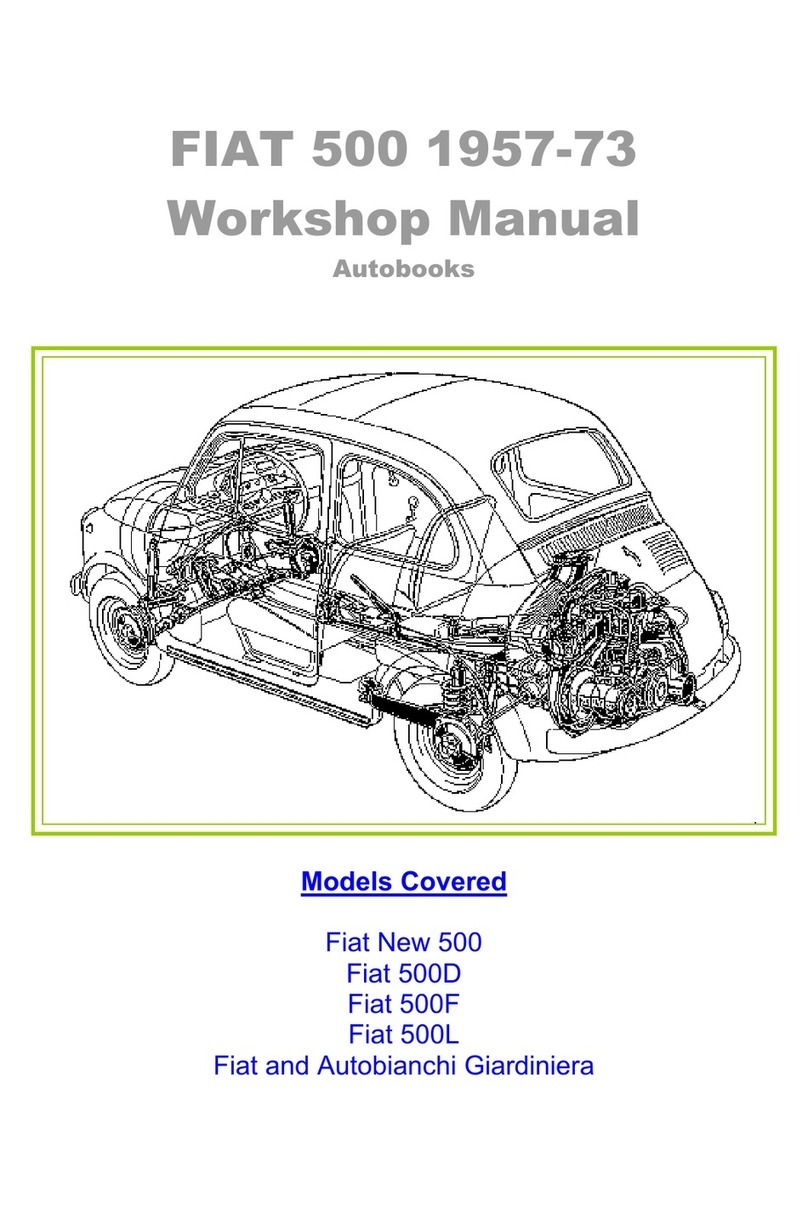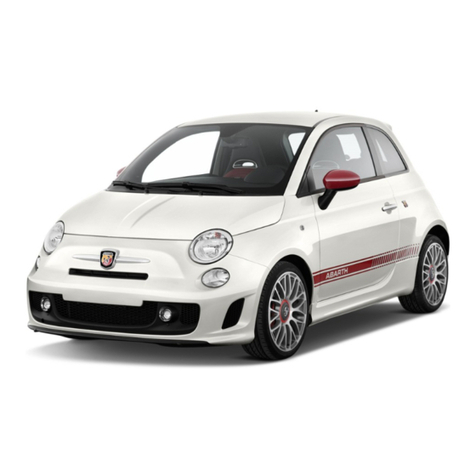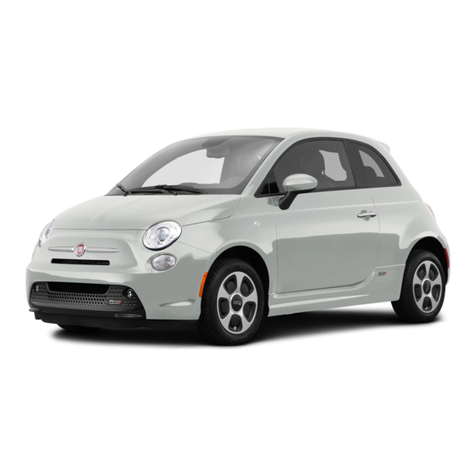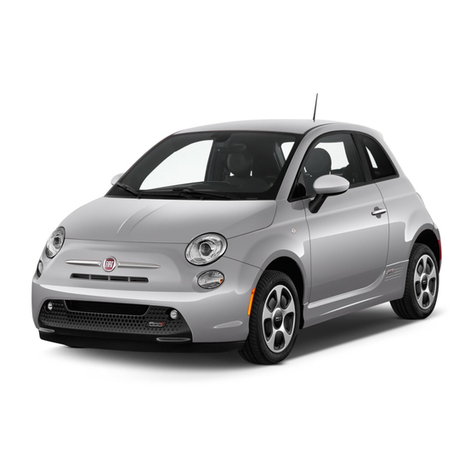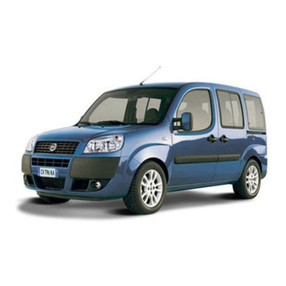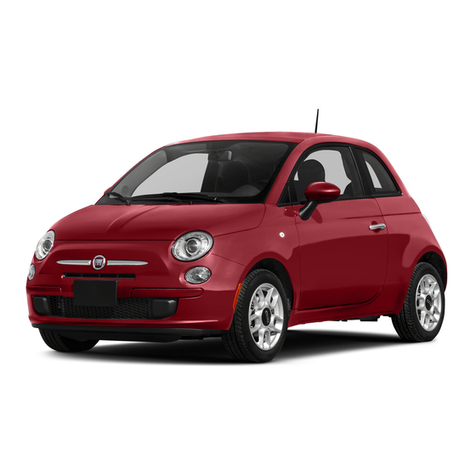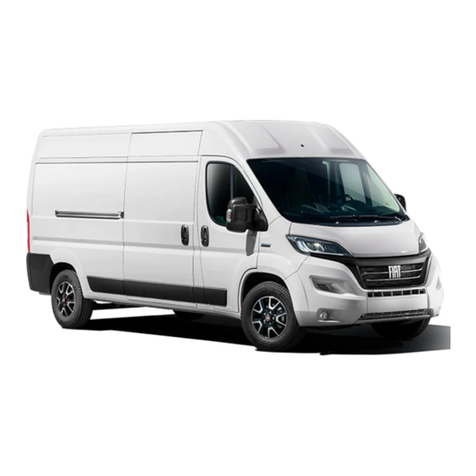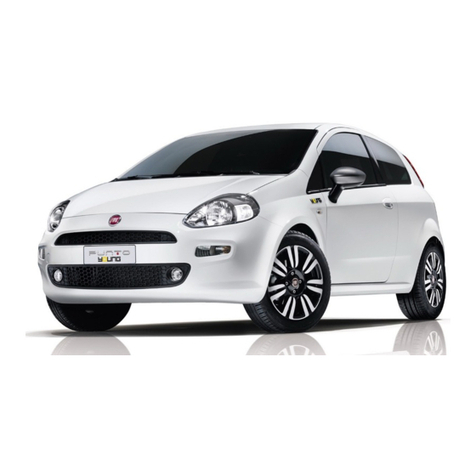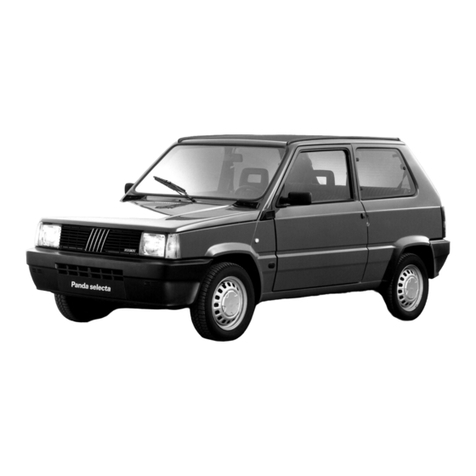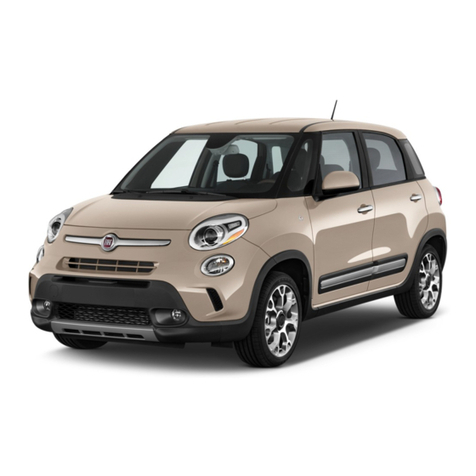
INTRODUCTION/WELCOME
WELCOME FROM FIAT .............2
CONTROLS AT A GLANCE
DRIVER COCKPIT ................4
INSTRUMENT CLUSTER ............6
GETTING STARTED
KEYFOB .....................8
VEHICLE SECURITY ALARM ..........9
POWER DOOR LOCKS .............9
SEAT BELT SYSTEMS ..............9
SUPPLEMENTAL RESTRAINT
SYSTEM (SRS) — AIR BAGS .........10
CHILD RESTRAINTS ..............14
HEAD RESTRAINTS ..............18
FRONT SEATS .................18
REAR SEATS ..................21
TILT STEERING COLUMN ..........21
OPERATING YOUR VEHICLE
ENGINE BREAK-IN RECOMMENDATIONS
..22
TURN SIGNAL/LIGHTS/HIGH BEAM
LEVER ......................22
WIPER/WASHER LEVER ............24
ELECTRONIC SPEED CONTROL ......25
POWER WINDOWS ...............27
MANUAL CLIMATE CONTROLS .......28
AUTOMATIC TEMPERATURE
CONTROLS (ATC) ................29
SPORT MODE ..................30
MANUAL TRANSMISSION ..........30
POWER SUNROOF ...............31
POWER CONVERTIBLE TOP
OPERATION ...................32
WIND BUFFETING ...............33
ENGINE BLOCK HEATER ...........33
ELECTRONICS
YOUR VEHICLE'S SOUND SYSTEM ....34
AM/FM RADIO WITH CD PLAYER AND
SiriusXM SATELLITE RADIO ..........36
STEERING WHEEL AUDIO CONTROLS . . 38
BLUE&ME™ HANDS-FREE
COMMUNICATION ...............39
iPod®/USB/MP3 CONTROL .........44
ELECTRONIC VEHICLE INFORMATION
CENTER (EVIC) .................45
PROGRAMMABLE FEATURES ........45
TRIP BUTTON ..................46
POWER OUTLET ................47
UTILITY
TRAILER TOWING WEIGHTS (MAXIMUM
TRAILER WEIGHT RATINGS) .........48
RECREATIONAL TOWING (BEHIND
MOTORHOME, ETC.) .............48
WHAT TO DO IN EMERGENCIES
ROADSIDE ASSISTANCE ...........49
INSTRUMENT CLUSTER WARNING
LIGHTS .....................49
INSTRUMENT CLUSTER INDICATOR
LIGHTS .....................54
IF YOUR ENGINE OVERHEATS .......56
TIRE SERVICE KIT ...............57
JUMP-STARTING PROCEDURE .......63
TOWING A DISABLED VEHICLE .......65
ENHANCED ACCIDENT RESPONSE
SYSTEM .....................66
FREEING A STUCK VEHICLE .........67
EVENT DATA RECORDER (EDR) .......68
MAINTAINING YOUR VEHICLE
OPENING THE HOOD .............69
ENGINE COMPARTMENT ..........70
FLUID CAPACITIES ...............72
FLUIDS, LUBRICANTS AND
GENUINE PARTS ................72
MAINTENANCE PROCEDURES .......74
MAINTENANCE SCHEDULE .........74
FUSES ......................79
TIRE PRESSURES ...............81
SUMMER/THREE-SEASON TIRES ......82
SPARE TIRES — IF EQUIPPED ........82
WHEEL AND WHEEL TRIM CARE ......84
REPLACEMENT BULBS ............84
CONSUMER ASSISTANCE
FIAT CUSTOMER CENTER ..........85
FIAT CANADA CUSTOMER CENTER ....85
ASSISTANCE FOR THE HEARING
IMPAIRED ....................85
PUBLICATIONS ORDERING .........85
REPORTING SAFETY DEFECTS IN THE
UNITED STATES ................86
MOPAR® ACCESSORIES
AUTHENTIC ACCESSORIES
BY MOPAR® ..................87
FREQUENTLY ASKED
QUESTIONS
FREQUENTLY ASKED QUESTIONS .....88
INDEX
.....................89
TABLE OF CONTENTS
1
